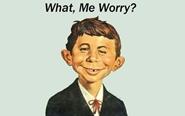Trade Cases

Unintended Consequences of Trade Actions
Written by Sandy Williams
May 25, 2017
As CEOs and association representatives presented their arguments for why the administration’s Section 232 action on steel imports should go forth, AIIS international Trade Counsel Gary Horlick talked about the unintended consequences of such actions.
AIIS represents 108 members that include traders, freight forwarders, stevedores, shippers, importers, exporters, railroads, port authorities, unions and other logistics companies. In total, members account for 80 percent of basic steel products imported into the United States.
“The purpose of Section 232 is to ensure that the U.S. military can obtain the types of products it needs in the quantities it needs when it needs them. It was not intended to provide overall protection for U.S. industry for other purposes – there are lots of other statutes for that purpose,” said Horlick in his opening statements.
The long-term prospects for the steel industry are good, said Horlick, pointing to new facilities like Big River Steel and the growth of the electric arc furnace sector. “Individual companies making individual products may change their product mix from time to time, but there is no sign that they cannot make the products our military requires as needed,” he said. An analysis under the Section 232 statue also requires looking at capacity available to the U.S. military from Canada and Mexico and other ally countries, said Horlick.
Section 232 has only been used successfully twice for import protection and in both cases it was to restrict the import of crude oil. Between 1959 and 1973, using a predecessor to Section 232 largely for political reasons, the United States imposed quotas on the import of crude oil. It excluded Canada but refused an exemption for close ally Venezuela. Following the rebuff from the U.S., Venezuela’s Minister Alonso flew to Saudi Arabia and founded OPEC.
During the period, oil prices for U.S. consumers were 50-100 percent higher than its foreign competitors, said Horlick. By the end of the quotas the U.S. had gone from net exporter of crude oil to net importer and was saddled with a trade deficit
“The important lesson that we can draw from this is that when contemplating using a statute like Section 232, we should treat it with extreme caution and concern for foreseeable and unforeseen,” said Horlick. “This is especially true when the rationale for employing Section 232 appears to be entangled with political considerations for broad industrial policy goals.”
A more likely threat to national security and the steel industry is the dwindling reserves of iron ore. Military competitors like Russia and China have more than double the iron ore reserves of the U.S., said Horlick. Stimulating the industry through increased steel production in the U.S. would make the United States more dependent on imports of ore from neighboring Canada and Mexico, and friendly countries like Australia and Brazil. Sourcing the raw material of steel from only the U.S. would lead to depletion of U.S. reserves much like quotas did for crude oil.
“Finally, it is impossible to ignore the certainty that other countries will retaliate against U.S. exports,” said Horlick.
Targets for retaliation could include military equipment. With the U.S. the largest exporter of military equipment in the world, it is not hard to hypothesize that countries whose steel imports may be limited by Section 232 restrictions will decide to stop buying American jets and other military equipment. There are competitors, like Russia, who would be happy to take their orders.
Targets for retaliation are numerous and in the past have included beef, chicken, and autos. Sixty countries banned beef from the U.S. in 2003 on “spurious SPS grounds” (sanitary performance standards), said Horlick, causing a $3 billion loss in exports. China responded to a safeguard by the U.S. on Chinese tires by imposing AD/CVD duties on imports of U.S. automotive and chicken parts. from the The chicken parts, paws and tips which have no other market except rendering, cost the U.S. poultry industry $500 million of its usual $800 annual sales.
“None of this is necessary, of course,” said Horlick. The government has full legal means to access what it needs for national security, he said. “In addition, less trade restrictive means such as additional subsidies could be used to stimulate production of those items.”

Sandy Williams
Read more from Sandy WilliamsLatest in Trade Cases

USTR targets China in new 301 probe; Biden calls for higher tariffs
The Biden administration on Wednesday announced measures to support the domestic steel industry.

Price: New trade rules will help domestic industries fight “unfair” trade
The Department of Commerce (DOC) has issued new rules to combat evolving "unfair" trade practice — including the unfair trade of steel products. They go into effect on Wednesday, April 24.

CRU: Mexico to toughen controls on steel imports
To ease trade tensions with the United States, the economy ministry in Mexico is preparing measures to strengthen definitions on steel being shipped into the country. Mexico has faced accusations it is being used as a route for steel and aluminum produced in Asia to be sent on to the US, so-called triangulation.

Biden reiterates position on USS sale
President Biden said on Wednesday he would stand by his commitment to US workers regarding the proposed sale of U.S. Steel to Japan’s Nippon Steel.

Japan’s Kishida and Biden to meet amid tensions around USS sale
Japanese Prime Minister Fumio Kishida will be in Washington this week where one topic under discussion with President Biden will be U.S. Steel's proposed sale to Nippon Steel.
